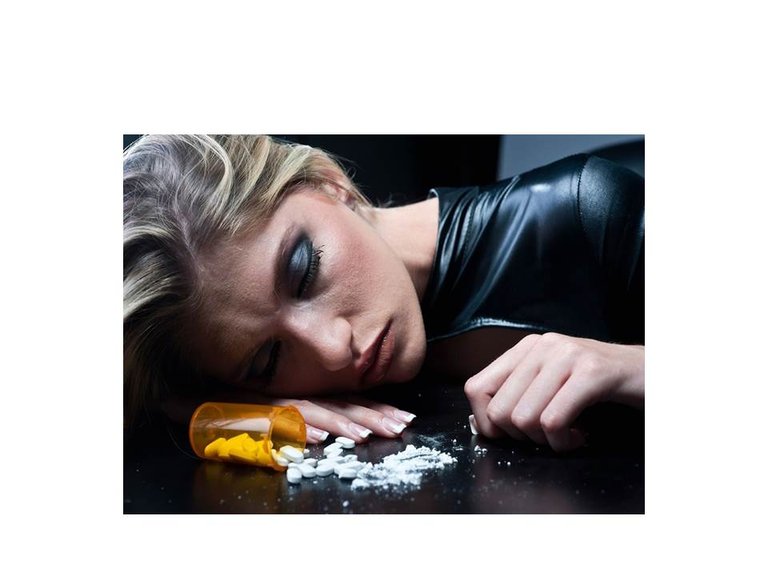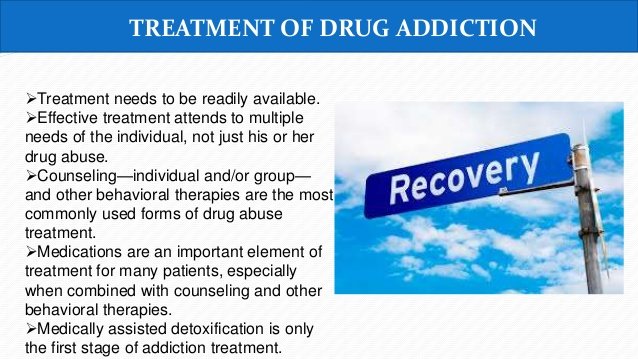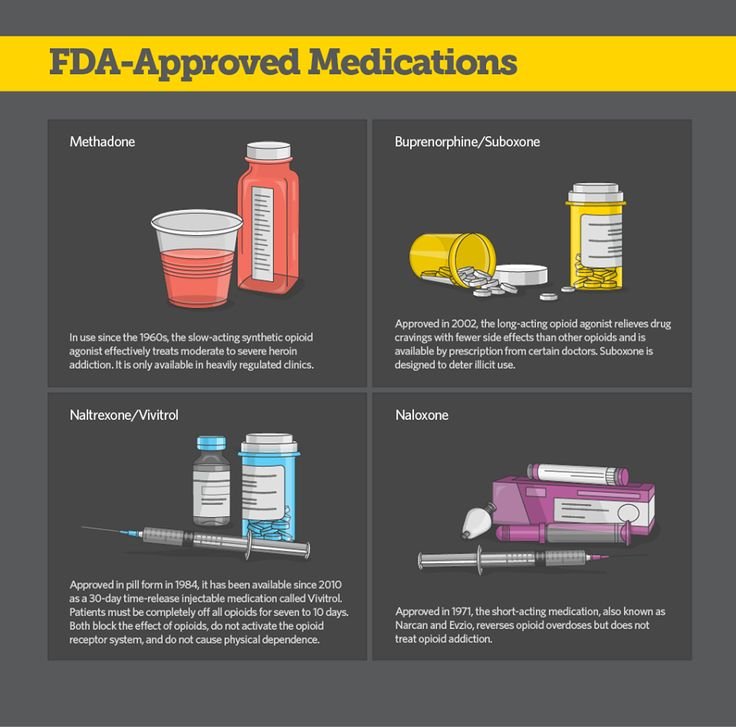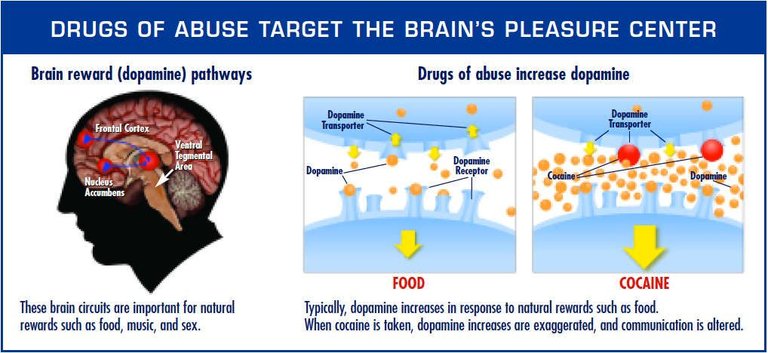INTRODUCTION
IMAGE1: DRUG ADDICT PATIENT.
However, the problem among drug abusers initially is the assumption that they can have power over the drugs being continuously abused until the drugs overpower them and set them off onto partially permanent state of health.Abusing of drug can be done unknowingly or knowingly, the addiction to drug is an event that take place after a very long drug use, especially illegal drugs (e.g heroin) although some prescription drugs ( e.g codeine) have also been abused at the same pace.
Drug addiction is simply the aftermath of drug abuse, the unprecedentedly irreversible damage it unleash to the brain called for concern and is the major challenge being faced by public health globally today. The changes drugs being abused cause to the brain after a prolonged use can continue even after the drug addict appears to abstained from drug use------a term called withdrawal syndrome. Even people who are physically dependent on drugs on medical basis could experience withdrawal syndrome after quitting of drug use.
IMAGE2. SYMPTOMS OF QUITTING DRUGS
This withdrawal syndrome is characterised with many behavioural implications such as incapability to have power over the use of same drug irrespective of its negative effects, psychiatric, and psychological problems. Also the withdrawal syndrome is also the cause of relapse that always poses tremendous challenges to medical personnel in this field.
There are many factors that can trigger this craving without the addict patient knowing which of these factors actually sparks up this event. These factors include family problem, work stress, psychiatric illness, social reminder that involved drug use, and smells associated with drug being abused etc. Therefore, the major of addiction treatment is to return people to psychological and productive functioning in workplace, family and community.
However, can addict eventually be treated, what are the challenges and strategies being employed, and how can we be of help now and in the future? until you follow me in this another drug abuse article!!
DOES DRUG ADDICTION TREATMENT WORTH IT?
Drug use can cost a nation a huge sum of financial loss than treating drug addiction itself. It costs united nation over 600 billion dollars annually. Likewise, maintaining the incarcerated drug addicts cost more than treating drug addiction. One year imprisonment can cost about 24,000 dollars per inmate whereas methadone treatment costs on the average 4,700 dollars per patient annually in the United States. Also, treatment of addiction reduces the rate of acquiring chronic infectious diseases such as HIVs, HCVs etc and social vices including crimes, rapes, thug rivalry etc.
DRUG ADDICTION TREATMENT
This is a practice targeted at helping addict patient or individual in stopping compulsive drug craving, seeking and use. Drug addiction is a chronic psychological disorder depicted with an occasional relapse, therefore requires a prolonged treatment that involves multifactorial interventions and consistent supervision.
Treating addiction involves the following:
(a) Behavioural Therapy,
(b) Medication
(c) Both
(d)Other socio-environmental strategies
The treatment types most time concertedly applied and also depends on the individual need of the patient and on the drug type being abused* in order to have an effective treatment.

IMAGE3: DRUG ADDICTION TREATMENT.
TREATMENT BY MEDICATION
The following drugs are administered according to the patient’s drug abuse:
1.Varenicline, bupropione and nicotine preparations (including gum, patches, nasal spray and lozenges) are used for treating persons that are addicted to tobacco,
2.II.Methadone, buprenorphine, and naltrexone are administered for treatment of opioids-addicted patients, and
3.III.Acamprostate, naltrexone and disulfiram are used for treating alcohol-dependants.
IMAGE4: PHARMACOLOGICAL TREATMENT OF DRUG ADDICTION.
More importantly, treatment for abused-prescription drugs (for e,g opioid pain-killer) may be similar with abused-illicit drugs (e.g heroines) if both have the same effects on the brain. Therefore, buprenorphine is used in both the treatments of opioid pain-killer and heroines addictions.
However, not all drug addictions can be treated with medications (e.g treatments of addictions by prescription drug stimulants and cocaine), thus, behavioural therapy actually serve significant purpose in this aspect.
BEHAVIOURAL THERAPY
This therapy can complement medication by motivating the patient to take his/her medications, and can also help to cope with drug craving, avoid addicted-drug use, prevent and deal with relapse, improve communication, parenting and relationship skills, and finally improve on family dynamics.
Behavioural therapy commonly include contingency management and cognitive-behavioural therapy.Also, these two sections can be carried out individually or in group by trained counsellors or medical personnel. Unlike individual therapy, group therapy can lead to iatrogenic (or unintended harmful) effects in which highly delinquent youth triggers drug use and disrupts the objectives of the therapy.
IMAGE5: GROUP COUNSELING AS DRUG ADDICTION THERAPY.
If the addicted suffers from other issues such as health (e.g AIDS), social (e.g unemployment), legal and family issues, both the addiction problem and these issues are addressed concurrently.
Also, most addictions come with mental illness including anxiety disorder, depression, schizophrenia or bipolar disorder; even patients with severe addiction that abuse multiple drugs are treated for all disorders and substances respectively and simultaneously with the addiction.
OTHER SOCIO-ENVIRONMENTAL STRATEGIES
Some socio-environmental measures such as:
I. Incentive strategies for drug addicts by government,
II. Provision of employment and routine check for drug addict who can demonstrate abstinence,
III. Legal involvement through parole for abstinence, and addiction treatment in prisons,
IV. Increase access to effective treatment,
V. Increased length of treatment (for at least 3 months) and
VI. reduced public stigma of drug addicts,
VII. Encouraging insurance parity,
VIII. Intensifying awareness among both healthcare professional and patients, as well as schools, homes and communities,
IX. Arresting of drug addicts not for incarceration but to connect them to appropriate treatment providers,
X. Encouragement of sport and exercise,
XI. Identification of drug abusers before serious drug problems,
XII. Establishments of free medical cares and information centres to locate appropriate treatment by government any country,
XIII. Availability of social service agents, psychiatric personnel and medical doctors, and
XIV. Encouragement of family and friend therapies etc.
All these can motivate patients to stay away from abusing drugs; stay in drug treatment and drastically reduce illegal and prohibited drug use.
WHY ARE DRUG ADDICTION TREATMENTS IMPORTANT IN WOMEN, PREGNANT WOMEN AND ADOLESCENTS?
Many life circumstances do have more negative impacts on women than their male counterparts according to research. It has been evidenced that sexual and physical trauma that followed post-traumatic stress disorders is common in drug-abusing women than their male opponents seeking treatment.
Abuse of drugs by pregnant does not only affect the mother but also the foetus.
(i) Alcohol drinking during pregnancy causes foetal alcohol spectrum disorder (FASD).
(ii) smoking may lead to still-birth, sudden infant death syndrome (SIDS), low birth weight, premature birth, respiratory problem and slow foetal growth.
(iii) opioid drug use may lead to withdrawal syndrome in new-born baby termed neonatal abstinence syndrome (NAS).
However, most medications used in addiction treatment have the potential of causing NAS but with different degree. For example, methadone causes more NAS in new-born than buprenorphine, resulting in short hospital stay for treatment of withdrawal syndrome.
Adolescents have (i) immature psychosocial and neurocognitive tendency, (ii) are more impulsive than being more reasoned and reflective, and (iii)also have weak planning, judgement, decision-making and self-control because their brains are still under development.
Therefore, their sensitivity to peer’s pressure and social cues is major factor that leads them to drug abuse. Parenting involvements, social engaging activists such as sports and schooling, case management, access to comprehensive assessment and family support services are part of behavioural therapy utilized for addict adolescents.
Buprenorphine is the medication suitable for opioid-addict adolescents as young as 16 years old.
IS THERE ANY DIFFERENT BETWEEN PHYSICAL DEPENDENCE ON DRUG AND DRUG ADDICTION?
Physical dependence is when the body has adapted to or tolerates high dose of drugs in order to bring about certain effect in which discontinue of this drug (especially illicit drug) will lead to physical and mental symptoms. This dependence can happen owing to chronic use of many drugs, both illegal drugs and prescriptive drugs even if taken as instructed (especially at high dose). It can accompany addiction and differentiating it from addiction is very difficult.
Drug Addiction is the compulsive drug use despite harmful effects that characterized by inability to stop using drug, tolerance, withdrawal, and failure to meet family, work and social obligations.
LIMBIC OR PLEASURE PATHWAY IN DRUG ADDICT AND DEPENDENT PATIENTS
The feeling of reward or pleasure is as a result of activation of mesolimbic dopaminergic pathway. Natural reward or pleasure in the mid-brain area are caused by food or sex, as well as many drugs such as cocaine, marijuana, amphetamine, alcohol, nicotine, opiates and caffeine that human abuse. These abused drugs that activate or inhibit different receptor system directly or indirectly in the mid-brain in order to increase the synaptic concentration of mesolimbic dopamine that binds to mesolimbic dopaminergic receptor and activates it to cause the pleasure or reward.
Drugs being abuse that directly amplifies the mesolimbic dopamine at the postsynaptic dopamine receptor include:
(i) Cocaine caused the blockage of the presynaptic dopamine transporter that mops up the mesolimbic dopamine, and
(ii) Amphetamine increased the release of mesolimbic dopamine from the synaptic vesicles of presynaptic neurones.
Drugs being abuse that indirectly amplifies the mesolimbic dopaminergic cue through varieties of receptor system include:
(i) Tetrahydrocannabinol (THC) binds to cannabinoid receptors,
(ii) Opiates, such as heroin or morphine bind to opioid receptors,
(iii) Caffeine blocks adenosine A2 receptors,
(iv) Alcohol allosterically facilitates GABAergic receptors and inhibits the N-methyl-D-aspartate (NMDA) glutamate receptors,
(v) Phencyclidine inhibits NMDA glutamate receptors, and
(vi) Nicotine derivative such as cigarettes activates nicotinic cholinergic receptors.
IMAGE6:EFFECTS OF DRUG ADDICTION ON THE BRAIN (REWARD PATHWAY)
ANHEDONIA OR DOPAMINE DEPLETION HYPOTHESIS
This hypothesis explains that the bid to increase mesolimbic dopamine and associated pleasure is the drive for continuous drug administration (i.e addictive behaviour), and also unrestricted use of drug such as cocaine that will later cause dopamine deficit state which in turn results in a cocaine crash (i.e depression) and biological demand (i.e craving) for more cocaine to replace the empty mesolimbic dopamine synapse.
CHALLENGES IN DRUG ADDICTION TREATMENT
In contrast, relapse with symptom recurrent rates may occur like other chronic medical diseases such as diabetics, cancer etc, and this may make treatment a failure. Although failure to medication is not a treatment failure, but this is a signal for a need for readjustment of treatment and to remain in treatment for an adequate period (at least 3 months). Therefore, the longer the longer is the duration of treatment the better the outcome of treatment.
Likewise, criminal involvement and severe mental disorders can cause a patient to drop out of treatment; therefore, intensive intervention should be encouraged to retain the patient.
Furthermore, co-occurrence of mental disorder with drug addiction also poses challenge to treatment of addiction, and if treatment will take place it is done concurrently.
Even, it is not all drug addiction cases medications can arrest.
PLEASE, GIVE YOUR JUDGEMENT. THANK YOU FOR FLIPPING THROUGH!